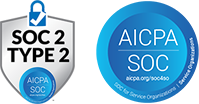What Is Affirmative Action in People Analytics?
Affirmative Action in People Analytics by SplashBI means using workforce data—demographics, hiring flows, promotion rates, and retention metrics—to set representation goals, monitor progress, and guide targeted interventions for under-represented groups. Through configurable dashboards, HR leaders can track candidate pipelines against legal requirements and internal equity targets, ensuring transparency and accountability.
Why Affirmative Action Matters in HR
Inclusive organizations outperform peers in innovation and employee engagement, yet many fail to translate diversity goals into action. After the 2023 Supreme Court ruling on university affirmative action, HR leaders face pressure to demonstrate workplace equity without quotas. People Analytics provides the evidence base to balance legal compliance with strategic diversity, minimizing risk of discrimination claims and strengthening employer brand.
How SplashBI People Analytics Enables Affirmative Action Insights
- Representation Heatmaps: Visualize workforce demographics across departments and tenure to identify gaps.
- Pipeline Analytics: Track applicant sources, offer rates, and acceptance by demographic segments.
- Pay Equity Analysis: Compare compensation across roles and groups, highlighting disparities for corrective action.
- Compliance Dashboards: Monitor progress against federal contractor requirements and internal targets in real time.
- Predictive Alerts: Forecast under-representation risks and trigger stakeholder notifications for timely interventions.
Affirmative Action Key Benefits
- Data-Driven Equity: Quantify representation goals and measure impact of diversity initiatives.
- Legal Compliance: Automate tracking for Equal Employment Opportunity (EEO) and Office of Federal Contract Compliance Programs (OFCCP) guidelines.
- Enhanced Talent Pipelines: Identify and develop under-represented talent pools to fill critical roles.
- Reduced Risk: Maintain audit-ready records and avoid fines or reputational damage from non-compliance.
- Strategic Insights: Link diversity metrics to performance and retention for holistic talent management.
Best Practices & Examples
- Benchmarking: Compare internal diversity ratios against industry standards—e.g., federal contractor averages—to set realistic targets.
- Structured Outreach: Use data to focus recruitment at minority-serving institutions and track outreach effectiveness in dashboards.
- Anonymous Screening: Implement blind resume review workflows in SplashBI to remove demographic bias from initial screening.
- Mentorship Analytics: Monitor participation and progression of mentorship programs for under-represented groups, adjusting pairings based on engagement data.
- Continuous Monitoring: Set threshold triggers for key metrics (e.g., promotion rates by group) and automate alerts for HR and leadership teams.
Conclusion
Integrating Affirmative Action into People Analytics transforms compliance tasks into strategic diversity initiatives. SplashBI’s unified platform equips HR teams with real-time insights, enabling data-driven policies, audit-ready reporting, and targeted interventions that foster true workplace equity and drive organizational performance.
Affirmative Action FAQs
Q: What do you mean by affirmative action?
Affirmative Action consists of proactive policies and practices—such as setting hiring and promotion goals—to correct under-representation of protected groups and promote equal employment opportunities.
Q: What is affirmative action called in India?
In India, similar measures are known as Reservation policies, which allocate quotas in public-sector jobs and educational institutions for Scheduled Castes (SC), Scheduled Tribes (ST), and Other Backward Classes (OBC).
Q: What is the difference between affirmative action and DEI?
Affirmative Action enforces legally mandated diversity goals and reporting, while Diversity, Equity & Inclusion (DEI) is a broader, voluntary framework focused on culture, policy, and employee experience beyond compliance.
Q: Who benefits the most from affirmative action?
Historically under-represented groups—including racial minorities, women, veterans, and persons with disabilities—gain enhanced access to jobs, advancement opportunities, and professional development through Affirmative Action.
Q: Affirmative action examples?
Examples include targeted campus recruitment at minority-serving institutions, mandatory unconscious bias training, and structured development programs for under-represented employees.
Q: Affirmative action vs DEI?
Affirmative Action mandates specific hiring or promotion targets under law; DEI encompasses strategic initiatives to foster inclusive culture and equitable practices without legal quotas.
Q: 3 types of affirmative action?
The three types are:
1. Recruitment Goals: Targeted outreach to under-represented groups.
2. Preferential Hiring: Subtle selection preferences for qualified candidates.
3. Training & Development: Programs preparing under-represented employees for advancement.
Q: Affirmative action ban?
Several U.S. states—such as Michigan (Proposal 2) and California (Proposition 209)—have banned race- or gender-based Affirmative Action in public employment and education, requiring demographic-neutral selection processes.



